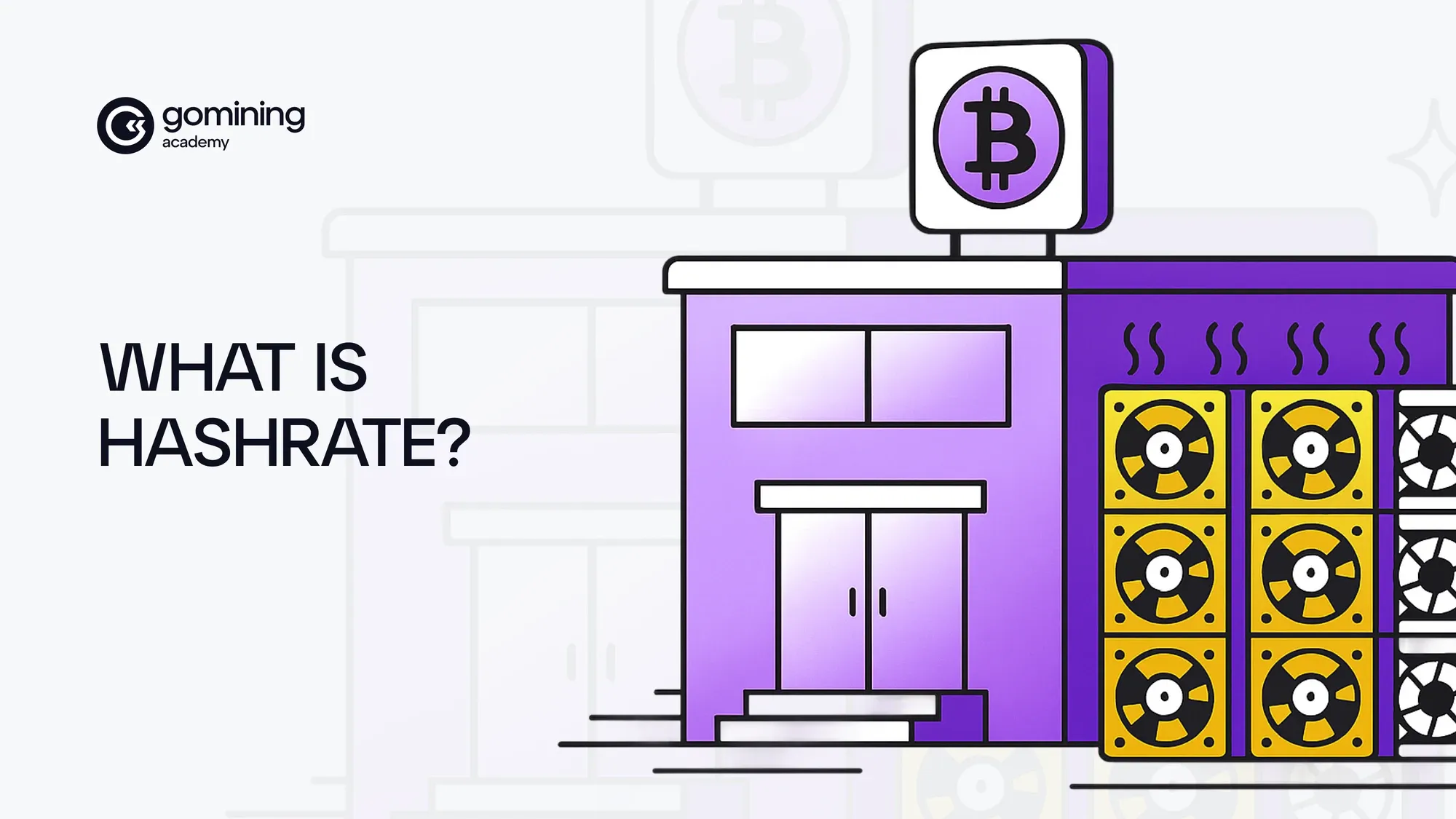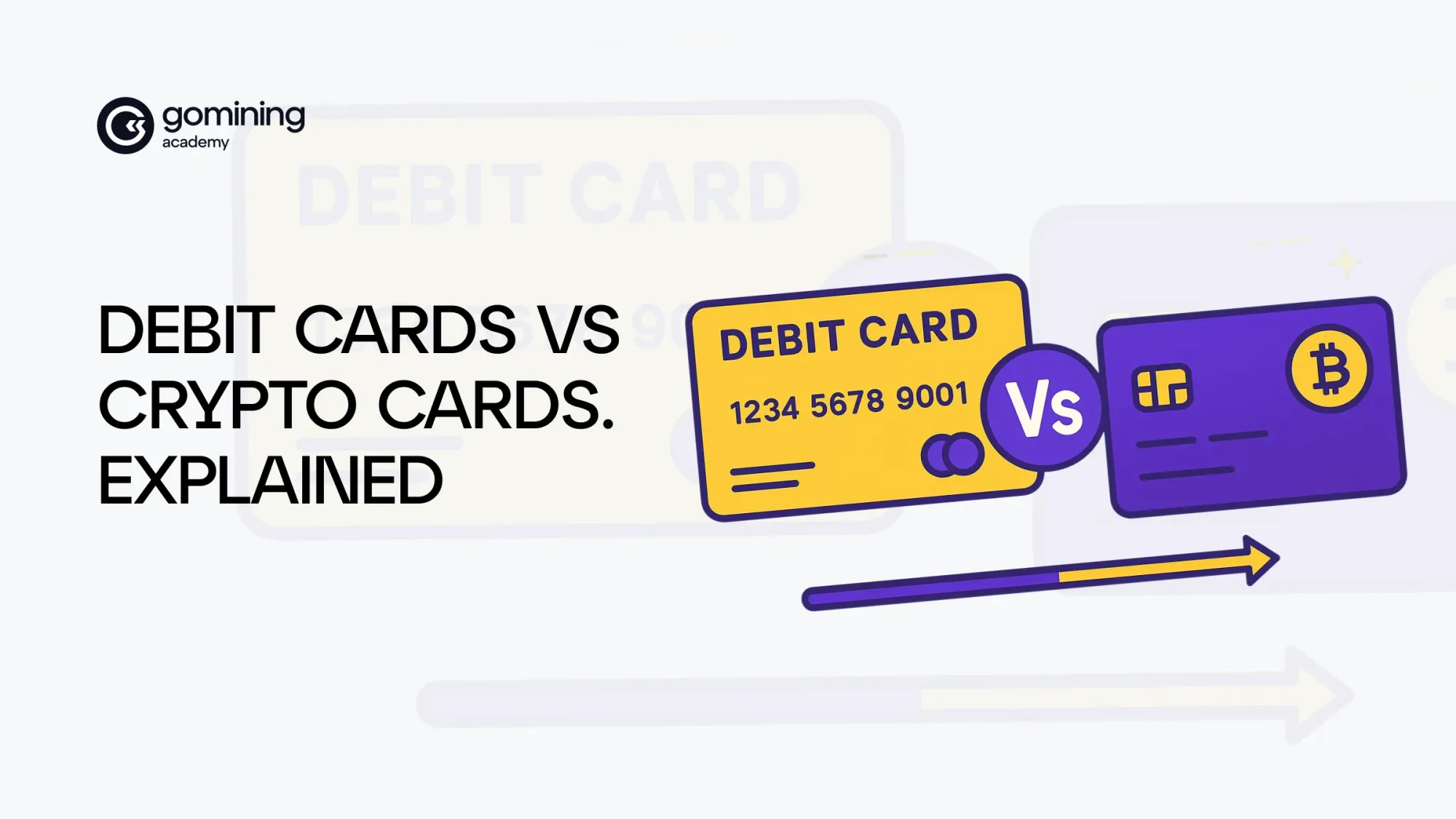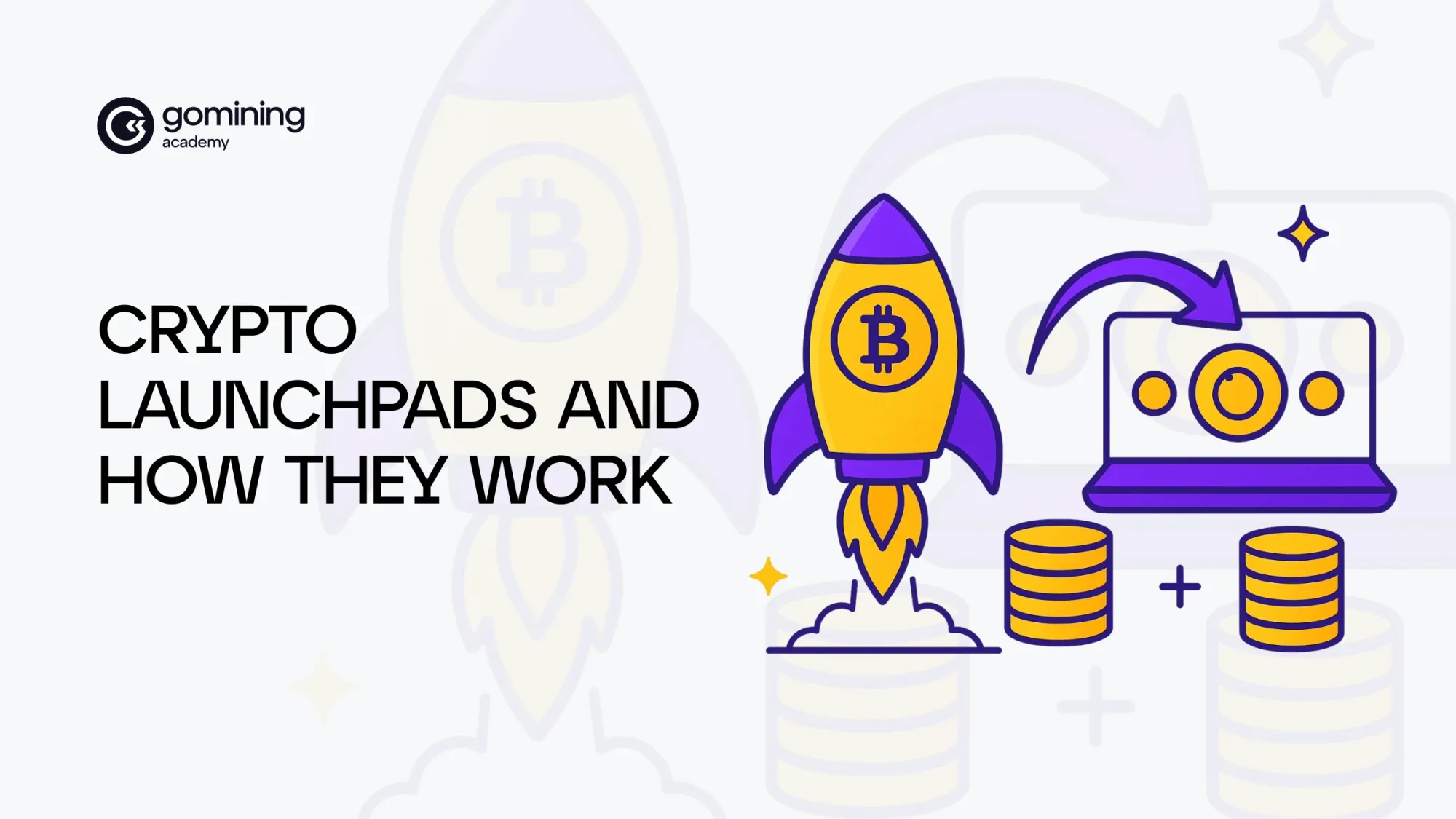What Is Hashrate?

Imagine a race where the prize is freshly minted Bitcoin—and your engine is pure computational firepower. That’s the world of Bitcoin mining. The Bitcoin hashrate tells us how fast that engine is running, and how fierce the competition really is. Ready to dive into the numbers? Let’s start with the basics.
Table of Contents
- What’s a Hash In Bitcoin?
- What Does Hashrate Measure?
- Bitcoin Hashrate : Mining Power and Block Rewards
- Why Bitcoin Hashrate Matters
- From Megas to Zettas: Bitcoin Hashrate in 2025
- Bitcoin Hashrate: Keeping Your Bitcoins Safe at Night
- Bitcoin Hashrate Meets Bitcoin Halving
- Pool Mining: Bitcoin Hashrate – Spreading the Love
- Bitcoin Hashrate vs. Hashprice
- Real-World Hashpower, Zero Hardware Headaches
- Conclusion: Hashrate = Strength
Blockchain Hash
In order to explain what is a hash rate, we must first define the word hash. In general, a hash is a unique digital identifier for data—like a fingerprint for a person or a license plate for a car. Once you have the fingerprint, you can trace it back to the individual; same with a license plate and its vehicle. A hash works the same way for data: it generates a one-of-a-kind label that lets you recognize and verify a specific set of information—without revealing what’s inside.
Transactions on the Bitcoin network work like this: every transaction gets bundled into a block, and each block waits its turn to join the blockchain—a public ledger that keeps everything transparent and tamper-proof.
A blockchain hash is the cryptographic fingerprint of an entire block—a single, 64-character string that represents every byte of data inside that block. Change even one detail and the blockchain hash changes completely. In other words, it’s the tamper-evident seal that links blocks together and guarantees the integrity of the Bitcoin ledger.
Bitcoin hashes are created by running data—such as a list of transactions or block information—through a special math function called SHA-256. This function scrambles the input into a 64-character string of letters and numbers. Even the tiniest change—like adding a single space—produces a completely different hash.
How Do You Calculate Hash Rate?
A Bitcoin hashrate measures how fast a computer (or the entire Bitcoin network) can perform these hash calculations over a specific time period.
Hash rate = total hashes computed / seconds elapsed
Professional Bitcoin miners use specialized mining machines built for one job: to run SHA-256 over and over again, trillions of times per second.
How Bitcoin Miners Use Hashes
What is a Bitcoin miner’s job? To validate and secure transactions. Their prize? Freshly minted Bitcoin. But before a block can be added, miners must crack a cryptographic puzzle. Specifically, they need to find a hash that starts with a certain number of zeros—like:
000000000000000000a3f4e9c1b87f2d9e4bc3a...
To play this guessing game, a miner builds a block using real data:
- A list of pending Bitcoin transactions
- The hash of the previous block
- A timestamp
- A special number called a nonce
They run this combo through SHA-256. If the resulting hash doesn’t have the required number of zeros, they tweak the nonce and try again. And again. And again.Trillions of times per second.
Eventually, one lucky miner hits the jackpot—a valid hash that meets the target—and broadcasts it to the network. That miner earns the reward, and the whole process starts all over again.
🏁 Hashpower and Block Rewards
This is where the Bitcoin hashrate flexes its muscles and becomes hashpower. A higher hashrate means a miner can blast through more guesses every second—giving them a better shot at winning block rewards. But hash rates aren’t just about speed. They are about power, dominance, and profitability in the world of mining. More hash rates mean:
🏆 A competitive edge in finding blocks before other miners
💰 A higher probability of earning rewards (especially crucial post-halving)
⚡ Better ROI on hardware investments — when your machine can crank out more hashes while using less energy, you’re not just solving puzzles faster—you’re doing it cheaper. That’s more Bitcoin earned per watt, and quicker payback on your mining gear.
In a world where trillions of hashes are calculated every second, even a small bump in your hashrate can mean the critical difference between striking digital gold—or watching someone else walk off with it.
Bitcoin Hashrate vs Price
There’s a fascinating connection between hashrates and the price of Bitcoin. When the price rises, mining becomes more profitable, so more miners join the network—pushing the hash rate higher. If the price falls, some miners may shut off their machines because the rewards no longer cover their costs, causing the hash rate to dip. This tug-of-war means the hashrate often follows price trends, but with its own unique lag and rhythm. Watching both together on a chart can reveal the health of the mining industry and the confidence miners have in Bitcoin’s future.
Bitcoin Network Hashrate: From Megas to Zettas
Back in 2009, miners managed only a few megahashes per second—about one million guesses a second. Fast-forward to 2025, and we’re deep in the zettahash era—that’s a thousand billion billion guesses per second.
To truly grasp the sheer scale of a zettahash, picture this:
If every human on Earth made one guess per second, it would take the entire global population nearly 4,000 years to match what the Bitcoin network does in just one second.

The Bitcoin hashrate chart above says it all: from roughly 200 EH/s in mid-2022 to 900-1 000 EH/s by mid-2025, the BTC hashrate has grown exponentially, mirroring the rise of Bitcoin from niche experiment to a global asset.
This massive surge in Bitcoin hashrate doesn’t just make mining more competitive—it makes the Bitcoin network dramatically more secure. Bitcoin’s protocol has a built in safety feature that increases the difficulty of the puzzle that the miners have to solve, depending on how much computational power is on the network.
But there’s a trade-off. This immense computational firepower doesn’t just protect Bitcoin—it also guzzles energy like a hyperscale data center. That consumption has made Bitcoin a lightning rod in environmental debates. Still, it’s sparked a wave of innovation: miners are now racing toward cleaner, cheaper energy—like stranded hydro, flare gas, and solar. The result? A hashrate that’s not just rising—but slowly going green.
Keeping Your Bitcoins Safe at Night With Bitcoin Hashrate
Bitcoin Hashrate = Fortress Mode
A high Bitcoin hashrate isn’t just an arms race—it’s a security feature.
To tamper with Bitcoin, a bad actor would need to control more than 50% of the total hashrate. That’s called a 51% attack, and with today’s massive global mining operations, pulling that off is basically science fiction.
Here’s what you’d need:
- 💸 Billions in mining hardware
- 🏭 Entire warehouses running nonstop
- ⚡ More electricity than some countries consume
So yes—not exactly a weekend side hustle.
Every honest miner adds power to the network’s shield. The higher the hashrate, the safer your Bitcoin.
The Feedback Loop: Matching Hashrate to Difficulty
Every 10 minutes, a new block gets added to the Bitcoin blockchain. As mentioned above, miners compete by solving a cryptographic puzzle. The faster your machine guesses, the better your chances of winning.
Now here’s where it gets clever: Bitcoin adjusts the difficulty of this puzzle every two weeks, based on how much computing power –aka Bitcoin hashrate– is on the network. More miners? The puzzle gets harder. Fewer miners? It gets easier. But the target never changes: one block every 10 minutes. Rain or shine. Boom or bust.
The Dance of Difficulty
Bitcoin’s difficulty is like a thermostat for mining speed. If blocks are getting discovered too quickly, the protocol tweaks the puzzle—usually by requiring more zeros at the beginning of the valid hash.
Think of it like increasing the number of combination locks on a safe.
- 📈 More miners? Add more zeros.
- 📉 Fewer miners? Remove a few.
It’s an elegant balance system. No matter how much raw power joins the game, Bitcoin keeps the rhythm: one block, ten minutes.
Bitcoin Mining Hashrate Meets Bitcoin Halving
As mentioned earlier, miners earn a reward in Bitcoin every time they successfully find a new block. But here’s the twist: that reward isn’t fixed forever. Every 210,000 blocks—or roughly every four years—Bitcoin goes through a halving. That means the reward for mining a block gets sliced in half, tightening supply and turning up the heat on mining competition.
Why does this matter?
Less reward means less profit per block, which can influence how many miners stick around—and how much hashrate is backing the network. Smaller or less efficient miners may drop out, but the most powerful and cost-effective operations stay in, keeping competition fierce.
Combine this with Bitcoin’s puzzle difficulty—which automatically adjusts to match total hashrate—and you get a natural pressure cooker.
On 20 April 2024 (block 840 000) Bitcoin threw its fourth “halving switch.” And within the space of a single block rewards dropped from 6.25 BTC to 3.125 BTC, making miners’ lives much harder : twice the work for the same pie size—only farms packing the latest ultra-efficient ASICs and bargain electricity could now keep going while making a decent profit.
That’s why, after a halving, we often see an arms race: more powerful machines, tighter margins, and a surge in hashrate from those aiming to stay ahead. Halvings don’t just slow Bitcoin’s supply growth—they sharpen the entire network.
Hashprice
So, we've established that hashrate is your muscle in the mining arena. But Bitcoin mining profitability is not governed just by raw power—enter hashprice, the economic flipside of the mining game.
Hashprice is a metric that tells you how much money a miner earns per unit of computational power, typically measured in dollars per petahash per second per day ($/PH/s/day). Think of it as the daily paycheck for every slice of hashrate you bring to the table. And just like paychecks, the hashprice can fluctuate—sometimes wildly—especially as the BTC hashrate pushes new highs.
Several factors influence hashprice:
- Bitcoin’s Market Price: When BTC pumps, so does hashprice. Miners earn more for solving the same block, which sweetens the deal. Over time, Bitcoin’s price has generally trended upward—but so have mining costs.
- Network Difficulty: As mentioned earlier, Bitcoin automatically ramps up difficulty as more miners jump in. That means you need to burn more energy and spend more money just to stay competitive, which can drag hashprice down.
- Block Rewards + Transaction Fees: Halvings cut block rewards in half overnight. If transaction fees don’t rise to cushion the blow, miners are stuck earning less for the same effort. Fewer rewards and flat fees = thinner margins and more pressure on profitability.
When the hashprice drops, it means miners are earning less per unit of Bitcoin hash rate—while still burning the same amount of electricity. That’s a profitability squeeze.
📉 In early April 2025, the hashprice dipped below $40/PH/s/day. That’s down from the $45–$50 range earlier in the year.
So, what’s causing the crunch?
- Halving Aftershock: In April 2024, block rewards were cut from 6.25 to 3.125 BTC. Miners instantly started earning 50% less Bitcoin per block.
- Rising Difficulty: More mining power means tougher puzzles. As the network adapts, it takes more hashrate to get the same reward.
Put it all together, and many miners—especially those with outdated hardware or expensive electricity—are now operating at or below break-even. When hashprice falls, the industry feels it fast: only the leanest, most efficient operations survive.
Real-World Hashpower, Zero Hardware Headaches
If hashrates and blockchains have you curious about Bitcoin mining, and you now want to know how to mine Bitcoin—but the thought of buying loud ASICs makes you wince, then you have another option.
Then take a look at GoMining and its digital Bitcoin mining platform. The platform turns industrial-scale mining into a simple “click, own, and earn” experience, because it is a digital Bitcoin mining platform.
If this sounds new to you, check out digital miner vs. cloud mining to get a better understanding of how a simple app on your phone can bring you a passive income. By choosing a Bitcoin mining app like GoMining, you have the opportunity to mine Bitcoins and participate in a revolutionary decentralized financial system. On the app you will be able to:
- Mint a Digital Miner NFT in the Bitcoin mining app or via the Digital Bitcoin Miners page. Each NFT is backed by real machines hosted by vetted GoMining hashpower providers.
- Estimate returns with the quickly with the Bitcoin mining calculator, then watch live payouts on the GoMiners dashboard.
- Choose your style: standard rigs or themed GoMining collections. And with GoMining avatars you can combine collectible NFTs with real-world Bitcoin mining rewards.
- GOMINING tokens: if you are a crypto tokenomics nerd, you can pay your fees with the GoMining Token to cut maintenance costs. You can unlock extra perks through the GoMining VIP loyalty program or gain more tokens with the GoMining crypto referral program.
- Level up the fun by dropping your miners into Miner Wars—a clan-based strategy game that pays extra BTC for winning battles.
Bottom line: GoMining gives you real hashpower, daily BTC payouts, and none of the cables, heat, or noise—perfect to slot alongside that new Bitcoin ETF in your portfolio.
Conclusion: Hashrate = Hashpower
Hashrate is more than just a number—it’s Bitcoin’s pulse. It tells us how secure the network is, how fierce the mining competition has become, and how healthy the entire system is under the hood.
From hobbyists mining in their garages to industrial farms crunching zettahashes, Bitcoin’s mining power has leveled up in a big way. Whether you’re running an ASIC or just stacking sats, tracking BTC hash rate gives you a clear view of where the network is heading.
And thanks to platforms like GoMining, joining the race no longer means racks of noisy machines or sky-high electricity bills. With digital miners, hashrate is now something you can own—easily, flexibly, and without touching a single cable.
Bitcoin’s future is being hashed out in real time. Let the machines spin.


